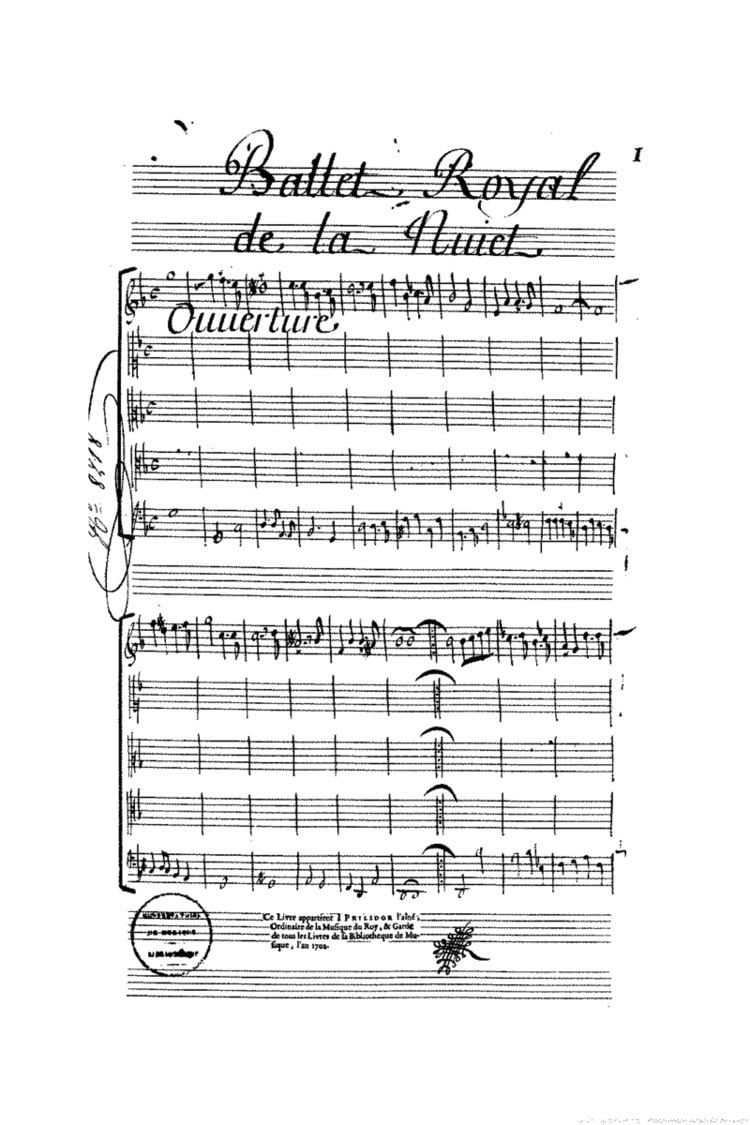 | ||
Ballet de la Nuit (Ballet of the Night) is a ballet by Jean-Baptiste Boësset, Jean de Cambefort, and Michel Lambert featuring music by Jean-Baptiste Lully. It is ballet de cour, premiered February 23, 1653 at the Salle du Petit-Bourbon. It took 13 hours to perform and debuted fourteen year old Louis XIV as Apollo, the Sun King (Le Roi Soleil). The ballet was the subject of the Oxford Dance Symposium in 2004, and there is an extensive study of the work by a group of scholars.
Contents
Plot and music outline
Ballet de la Nuit was divided into four parts providing detailed elements of the landscape of the night. Composed by Jean-Baptiste Lully, it was an extravagant court spectacle featuring forty-five entrees, three ballets within a ballet over the course of twelve hours. The plot included mythological goddesses such as Venus and Diana, werewolves, demonic creatures and witches who celebrated a black Sabbath in the horrors of the night. Shepherds, gypsies, thieves, lamplighters, beggars and crippled are among the “realistic” characters of the play. King Louis XIV appears with the coming of the day as the sun god Apollo, one of his many personifications as the rising sun, emphasizing the power of the monarchy and its closeness to the divine.
Costumes
Henri de Gissey (c. 1621–73), Dessinateur ordinaire du Cabinet du Roy, was in charge of dress design for the royal ballets. A collection of 10 scenic and 117 costume designs for the ballet made for Louis Hesselin (1602-1662) and attributed to Gissey are now at Waddesdon Manor. Another folio with 119 costume designs made for Denis-Pierre-Jean Papillon de la Ferté (1727-1794) is now in Paris at the Bibliothèque de l'Institut (MS 1004).
Movie
There is one scene from Ballet Royal de la Nuit in the historical movie Le Roi danse (scene used in this movie is from the end of ballet, called The sun rise, fr. Le Roi représentant le soleil levant).
